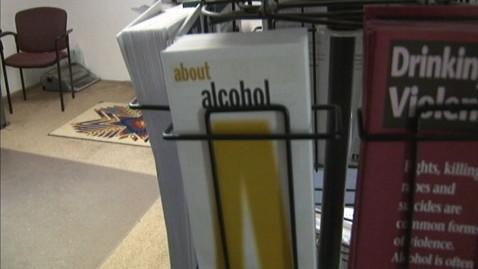First Alcoholic Drink at Age 5? Reservation Counselor Says It’s Happening
By DENISE MARTINEZ-RAMUNDO
Exactly how bad a problem is alcohol use on the Pine Ridge Indian Reservation? Consider this: children on the South Dakota reservation often have their very first drink at the age of five or six, says Terryl Blue-White Eyes, the director of the only substance abuse program on the reservation.
Ask how they got that drink, Blue-White Eyes says, and the children respond with answers like, “Well, I had leftovers. It was in the bottle. It was on the table.”
An estimated 80 to 90 percent of adults on the reservation are addicted to alcohol, according to Tribal Police Captain Milton Biannas.
“Why Die?” street signs caution people to drive safely while crosses along the roads are sad reminders of the lives lost to drunk driving accidents.
Last year, there were seventeen thousand alcohol-related arrests. Ironically, the Pine Ridge Indian Reservation is dry, which means the sale and consumption of alcohol is prohibited.
But just outside the reservation, in the bordering town of White Clay, Neb. alcohol is legal. Though only fourteen people live in this neighboring town, each year 4 million cans of beer are sold. The big seller is called Joose and some fruit-flavors are like a whole bottle of wine in a can. They contain up to 12 percent alcohol.

Pamphlets on alcohol abuse are displayed at Anpetu Luta Otipi, the only substance abuse treatment program at the Pine Ridge Indian Reservation.
An employee from one of White Clay’s liquor stores estimates that about 90 percent of their customers come from the reservation.
How Captain Bianas feels about alcohol sales may surprise you: He thinks alcohol sales should be legalized on the reservation.
“If we were to get that money that they’re making over there, we could build treatment centers. But it just ain’t happening,” he said.
The name of the substance abuse program Blue-White Eyes runs is Anpetu Luta Otipi, which means live in a red day or start anew without alcohol or drugs. But that’s not easy here, where so many are hooked.
“If there’s chronic alcohol use, then you’re going to see domestic violence. You’re going to see children that are being abused or neglected. You’re going to see poverty,” she said.
Blue-White Eyes said that alcohol treatments that emphasize “hitting bottom” won’t work for the Pine Ridge population.
“Indians are below bottom,” she said. “That valley of despair was so low it’s taken us generations to start climbing out.”
Watch the full story on “Hidden America: Children of the Plains,” a “20/20? special with Diane Sawyer, Friday at 10 p.m. ET.